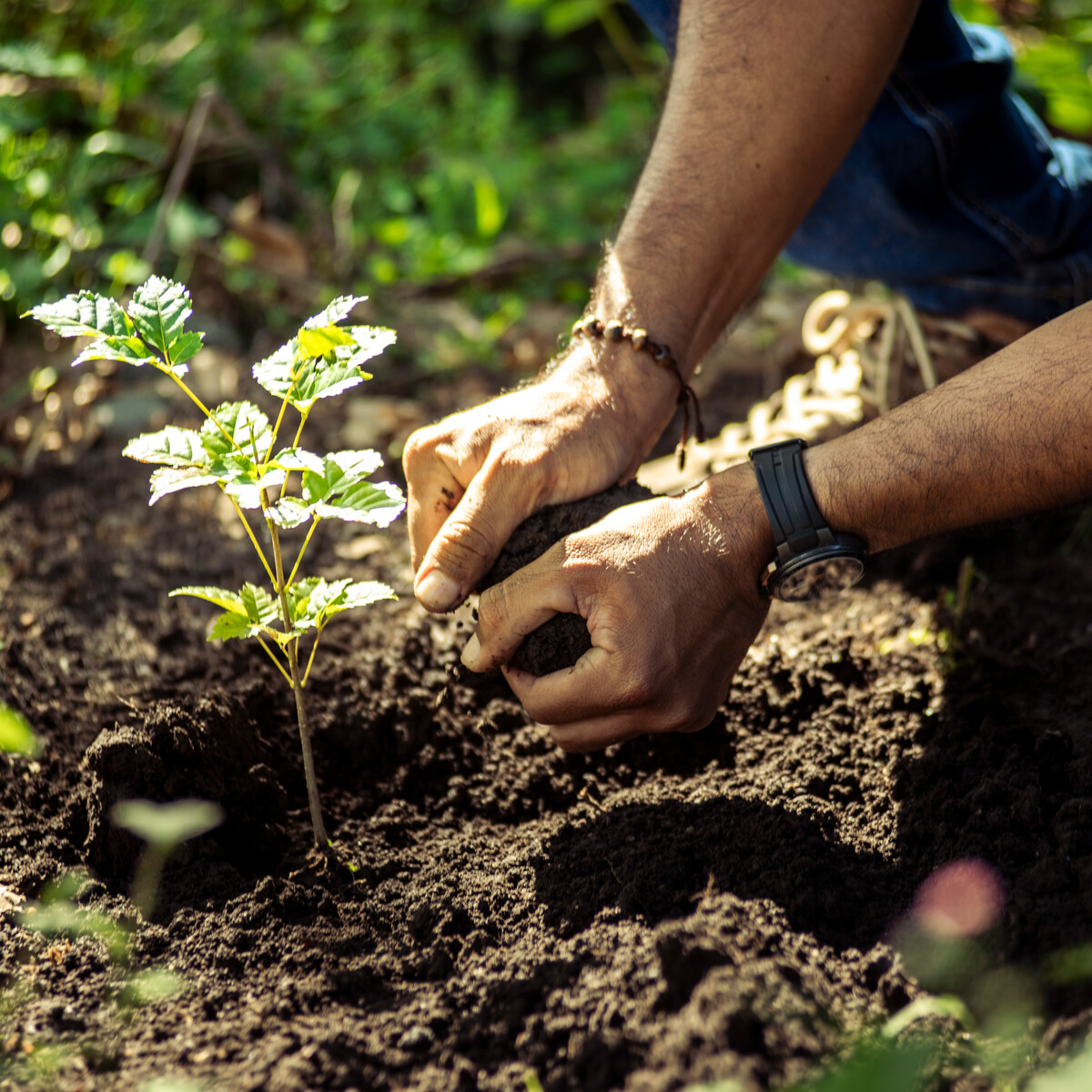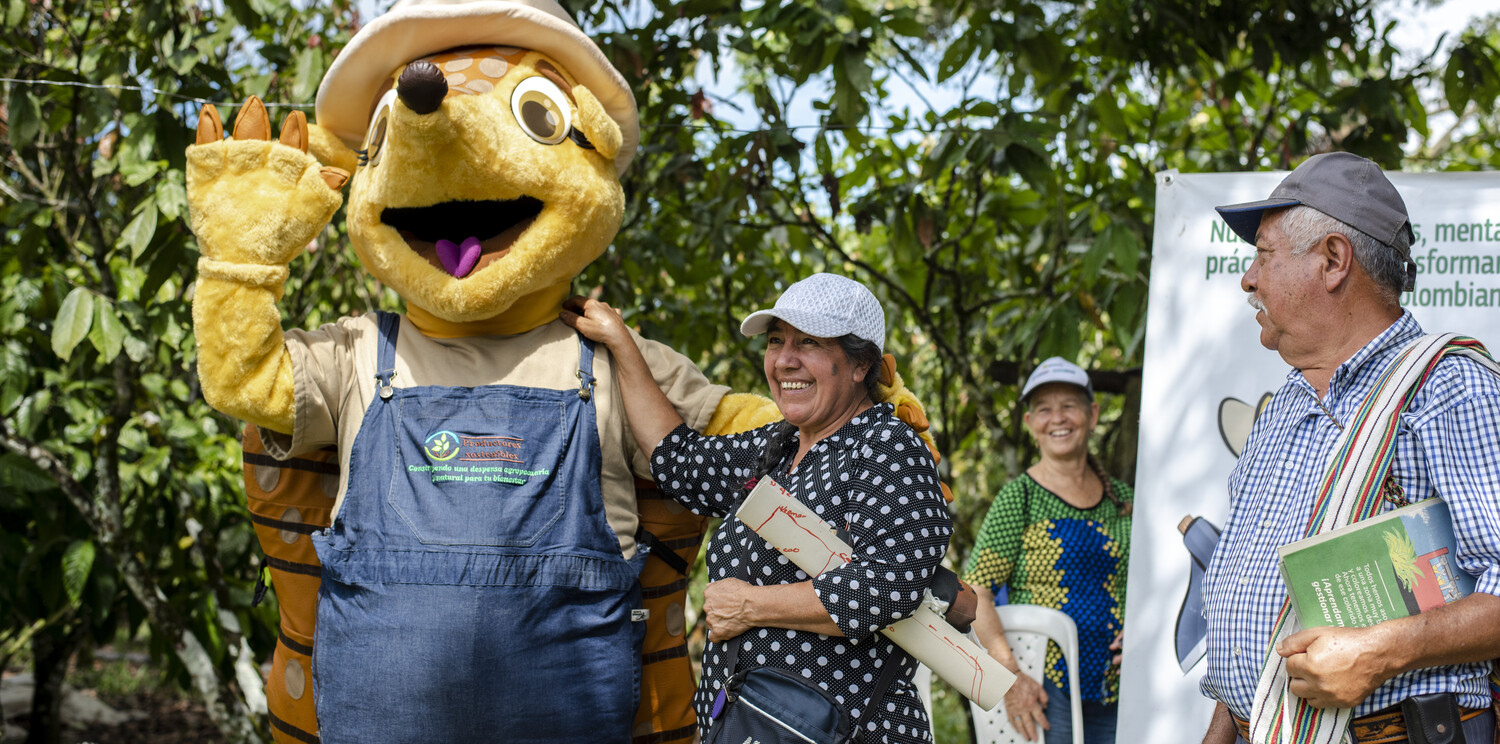Protecting Biodiversity, Landscapes, and People through Regenerative Farming
Smallholder farmers shape our global food system and economy. Through regenerative farming, farmers can create new social norms for sustainable farming. The results are incredible. We restore the soil, biodiversity flourishes, carbon remains in the ground, and we create better community climate resilience. Regenerative agriculture is a powerful solution to promote food security, climate resilience, and farmer livelihood.
» Learn more here about Rare’s work and approach to sustainable farming through its regenerative agriculture program, Lands for Life. Learn more below about the topic of regenerative agriculture.
What Is Regenerative Agriculture?
How Do Farming Practices Hurt the Land?
What Are the Benefits of Regenerative Agriculture?
What Are the Practices of Regenerative Agriculture?
How Does Regenerative Agriculture Support the Climate?
How Does Regenerative Agriculture Increase Biodiversity?
What Is Soil?
Are Soil and Dirt the Same Thing?
What Does Healthy Soil Look Like?
What Is Soil Biodiversity?
How Much Biodiversity Is Found In Soil?
How Does Rare Support Regenerative Agriculture?
What Is Regenerative Agriculture?
Regenerative agriculture is a powerful climate change solution that can transform farmers’ relationships with the land. Rooted in behavioral change, its practices rely on farmers changing their agricultural techniques to adopt more sustainable methods. Regenerative farming is a holistic approach that incorporates techniques like composting, rotating seasonal crops, and using natural fertilizers over chemicals to support people and the environment.
How Do Farming Practices Hurt the Land?
The traditional extractive approach to agriculture and livestock management is not sustainable. Smallholder farmers tend to rely on entrenched farming and ranching practices to manage their land. Faced with climate change and other challenges, they typically resort to quick, short-term solutions, like overusing chemical fertilizers that degrade soils and water, expand the agricultural frontier, and generate high carbon emissions. These practices undermine ecological integrity and agricultural productivity and damage farmers’ livelihoods and their communities’ prosperity in the long term.

What Are the Benefits of Regenerative Agriculture?
Regenerative agriculture has numerous benefits for people and nature. Farmers practicing regenerative agriculture help restore the soil, support biodiversity, promote carbon sequestration, and create more climate-resilient landscapes. From a livelihood viewpoint, regenerative agriculture leads to higher crop yields, healthier food, financial security for farmers, and overall food security for communities.
What Are the Practices of Regenerative Agriculture?
Regenerative agriculture includes various sustainable farming practices that differ based on community and geographic location. Common practices include:
- Cover crop expansion: Farmers plant more cover crops to restore the soil, reduce erosion, and remove carbon from the atmosphere.
- Integrated pest management: Farmers reduce their use of chemicals by encouraging and relying on native insects and plants to help control diseases.
- Native plant reforestation: Planting native species of plants and trees provides native pest control and supports soil health.
- Compost: Farmers recycle organic material like grass cuttings, leaves, and food scrapings to produce natural compost that fertilizes the soil and replaces chemical fertilizers.
- Riparian forest buffers: Planting shrubs, bushes, and trees alongside streams and rivers helps to filter excessive nutrients and animal waste from runoff, provide shade to fish, and stabilize eroding soil.

How Does Regenerative Agriculture Support the Climate?
Regenerative agriculture can play a key role in combatting climate change and lowering global carbon emissions. Sustainable farming practices like composting, planting native trees, and natural pest management help restore the soil and promote carbon sequestration.
How Does Regenerative Agriculture Increase Biodiversity?
Regenerative agriculture promotes healthy and nutritious soil that supports a variety of life. Healthy soil is bursting with life – more than half of all lifeforms on earth reside in a handful of soil. The soil provides a habitat for visible lifeforms like insects, fungi, and small mammals, and billions of microorganisms invisible to the human eye. All these lifeforms play a key role in ecosystem health.
Stay Connected
Sign me up for occasional emails to learn more about Rare’s work and how I can support its mission. I know I can unsubscribe at any time.
What Is Soil?
Soil is the biological mixture of matter in the earth’s uppermost crust. Soil is comprised of biotic factors like plants and insects, as well as abiotic factors like water and minerals.
Are Soil and Dirt the Same Thing?
Soil and dirt are not the same thing. Although closely related, there are a few distinct characteristics that separate soil from dirt. Dirt is small particles of clay, sand, silt, gravel, and stones. Alone, dirt is not sufficient to grow plants or foster life. Soil is a unique living ecosystem comprised of plants, animals, water, and minerals. Dirt is just one small component of the mixture that makes soil.

What Does Healthy Soil Look Like?
Healthy soil is vital for life on earth and environmental services like carbon sequestration, nutrient cycling, erosion prevention, and providing habitat for wildlife. Common characteristics of healthy soil include:
- Rich organic matter that gives the soil a dark color.
- Air pockets that allow plants and animals to move freely and distribute nutrients.
- A light, crumbly texture that falls apart when scooped up in your hand.
- Strong plant root systems that secure soil in place and prevent erosion.
What Is Soil Biodiversity?
Soil biodiversity refers to the various life forms found in soil. This biodiversity includes billions of organisms such as bacteria, protozoa, fungi, insects, and small mammals. Biodiversity is critical for soil health as it contributes to important ecological services like nutrient cycling, water filtration, and carbon sequestration.
How Much Biodiversity Is Found In Soil?
Soil is incredibly biodiverse. More than half of Earth’s biodiversity is found in our planet’s soil. One teaspoon of soil contains more life than the number of people on the planet.

How Does Rare Support Regenerative Agriculture?
Rare seeks to transform and reimagine how we farm for the future. Through Lands for Life, our regenerative agriculture program in Colombia, we partner with farming communities in high-biodiversity ecosystems to shift to regenerative agriculture and more sustainable ranching practices. Rare mobilizes extension agents, local leaders, and small-scale farmers in Colombia to address conservation challenges and inspire community members to become agents for change. The program helps smallholder farmers create sustainable and long-term solutions for people, biodiversity, and the climate.